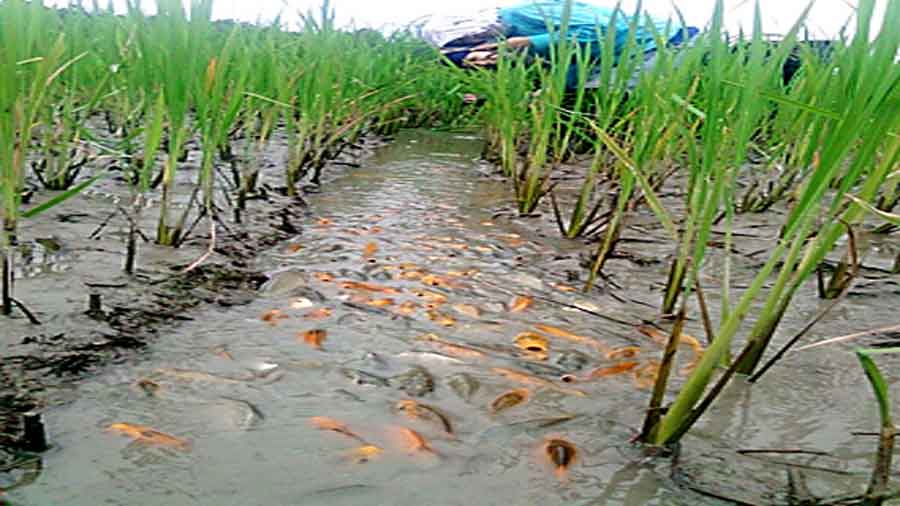Fisheries is one of the fastest-growing sectors in the world that plays an important role in economic development as well as in facilitating nutrition security. Animal protein is a primary source of protein for billions of people and aquaculture provides for the livelihood of more than 10% of the global population. That there is a marked preference for non-vegetarian food as a source of protein among Indians has been clearly indicated by the recent figures of the fifth round of the National Family Health Survey, which found less than 25% Indians to be vegetarian.
The global population is still on a rising curve. Therefore, challenges to food and protein endure. Recent NFHS data found gaps in India’s nutritional chart. A 2017 survey, “Protein Consumption in Diet of Adult Indians: A General Consumer Survey (PRODIGY)”, also revealed that 73% of Indians consume a protein-deficient diet. With shrinking land holdings and saturating farm productivity, aquaculture offers a promising solution because inland reservoirs, rivers, channels and aquaculture resources in India are grossly underutilised and have huge production potential. For example, inland ponds in India are just about 40% utilised when it comes to their fishing capacity. In the case of rivers and streams, the figure is even lower. This sector is yet to see the kind of technological change that the agriculture sector underwent during the Green Revolution. With changing food preferences,the time is ripe to improve nutritional security by riding on the wave of the Blue Revolution.
The employment-generation potential of aquaculture has remained low because of such factors as the lack of technological adoption and poor supply chain linkages and logistical support. The sector remains unorganised; the inland fisheries segment is fragmented. While many FMCG brands deal in vegetarian products, fisheries products lack equivalent brands. Fishermen cooperatives have hardly exhibited the kind of capacity that cooperatives in other sectors — like sugarcane,milk and so on — have. Nor have there been aggressive campaigns to promote fish and other aquaculture-related produce as we have seen in the cases of milk (Amul) and eggs (National Egg Coordination Committee). The agriculture sector has drawn national attention historically, but there is hardly any recorded history of major fisheries-related movements akin to farmers’ movements. The sector is beset with patchy incentivising mechanisms due to the absence of effective pressure groups. It also suffers from coordination issues: the regulatory departments for water bodies and fishing activity are different.
The future trajectory of the sector greatly depends on technology adoption. Israel has scaled up fish production by implementing new technologies. Recent interventions include Cage Culture — for both inland reservoirs and marine areas — Recirculatory Aquaculture System, Biofloc System and so on and can herald a new era in fisheries and aquaculture in India. Various government schemes as well as the flagship Pradhan Mantri Matsya Sampada Yojana are key drivers behind this new sectoral growth in fisheries and aquaculture. As a result of the new initiatives, the fisheries sector has been growing at an average rate of more than 7% and has assumed the status of being a leading sunrise sector. It is high time that the issues of nutritional security and aquaculture sector growth are coupled with each other for a stronger, fitter India.










